- Home
- Graham Hancock
Magicians of the Gods: The Forgotten Wisdom of Earth's Lost Civilization Page 15
Magicians of the Gods: The Forgotten Wisdom of Earth's Lost Civilization Read online
Page 15
The evidence is suggestive at best. I would not want to bet my life or my reputation on it! Nonetheless the scenario that sees Derinkuyu and the other underground cities constructed in the Upper Palaeolithic around 12,800 years ago at the onset of the Younger Dryas has the great merit of no longer leaving us casting about for a motive commensurate with the huge effort involved. We are informed of that motive quite explicitly in the story of Yima. Stated simply, the cities are Varas, cut down into the depths of the earth as places of refuge from the horrors of the Younger Dryas, which were not limited to the “vehement destroying frost” but—as we know from the cosmic impact spherules and melt-glass found in sediment samples at nearby Abu Hureyra—also included the terrifying threat of bombardment from the skies.
Like a snake out of the sky
It is close to certain, if our planet did indeed cross the path of a giant comet 12,800 years ago as Firestone, Kennett and West maintain, that the bombardment would not have been limited to the large fragments that came down during the first event. The comet’s debris stream would have remained on an earth-crossing orbit and would very likely have resulted in decades, perhaps even centuries, of subsequent bombardments—not on the same scale of intensity as the initial encounter, but nonetheless able to cause catastrophic damage and to spread enough fear and dismay of the mighty “serpent” lingering in the heavens to justify the construction of secure underground shelters.
Indeed, as we will see, the earth may still cross the debris stream of the giant Younger Dryas comet today and large, deadly objects, blacker than coal, invisible to our telescopes, may still be orbiting in that stream today. I’m reminded again of the Ojibwa prophecy reviewed in Chapter Three:
The star with the long, wide tail is going to destroy the world some day when it comes low again. That’s the comet called Long-Tailed Heavenly Climbing Star.
Is the Younger Dryas comet coming back? Could it be that it did not spend all its anger and destructive force with the fragments that hit the earth and caused the vehement destroying winter of the Younger Dryas 12,800 years ago?
Curiously the ancient Iranian traditions contain a prophecy also, for it is said that Yima will return, and will walk again among men, when:
the signs foreshadowing the last of days appear. Of these the worst will be a winter more terrible than any the world has seen before when it will rain and snow and hail for three long years.52
The fiery descent of more fragments of the comet could bring about such a winter, just as happened 12,800 years ago. And just as happened then, it would do so in part because the skies would be darkened by debris and smoke from the wildfires caused by airbursts and by the superheated ejecta from the impacts on land. These are grave matters, and we will return to them in Chapter Nineteen. But first we must consider the story of Noah, the Hebrew counterpart of Yima, carried by the waters of the flood—so we are told—to the slopes of Mount Ararat, just a few days’ walk from Göbekli Tepe. The Noah story also contains a prophecy which is made manifest in the New Testament, 2 Peter 3: 3–7:
By water the world of that time was deluged and destroyed. By the same word the present heavens and earth are reserved for fire, being kept for the day of judgment and destruction of ungodly men.
Or as the old song has it:
God gave Noah the rainbow sign: no more water, the fire next time.
Chapter 8
The Antediluvians
The Biblical story of the Deluge is too familiar to require extensive repetition here. The essential elements can be summarized as follows:
• A life-destroying global flood, sent by God to punish human wickedness.1
• A man (Noah) selected by God and given advance warning of the coming cataclysm so that he can build a survival ship (the Ark).2
• The preservation in the Ark of the seeds, or breeding pairs, of all forms of life, with a particular emphasis on human life (Noah and his wife together with their sons and their wives) and animal life (“of fowls after their kind,” as we saw in the last chapter, “and of cattle after their kind, of every creeping thing of the earth after his kind, two of every sort shall come unto thee, to keep them alive”).3
• The Ark rides out the flood until the waters subside.4
• The Ark comes to rest “on the mountains of Ararat.”5
• When the waters have “dried up from the earth” God instructs Noah to leave the Ark with his family and to “bring out every kind of living creature that is with you—the birds, the animals, and all the creatures that move along the ground—so they can multiply on the earth and be fruitful and increase in number on it.”6
• Noah builds an altar on which he sacrifices some of the animals and birds that he has just saved from the flood. The smell of the burned offerings is pleasing to God.7
• The surviving humans and animals go forth and multiply “and fill the earth” as they have been commanded.8
Mount Ararat rises to 5,137 meters (16,853 feet) and geologists assure us, on the basis of excellent science, that no part of it has ever been covered by oceanic floodwaters since it began to take shape as a mountain near the end of the early Miocene some sixteen million years ago. The presence of anatomically modern humans in the world, as we saw in the last chapter, cannot be traced back further than two hundred thousand years, and even the last common ancestor with the chimpanzee—a creature that was very far from being in any sense “human”—takes us back barely six million years, so the notion of a boat with humans on board being washed up on Mount Ararat is a chronological impossibility.
Figure 25
Nonetheless, it is intriguing that the story of the Deluge as given in the Old Testament makes specific and deliberate mention of “the mountains of Ararat” (the “Mount” does in fact have twin peaks) which, in Biblical times, were understood as being part of the “Kingdom of Ararat,”9 the historic land of Urartu, conquered by the Assyrian King Shalmaneser in the late second millenium BC.10 Due to the limited archaeology that has been undertaken in the region, historians confess that “the origins of Urartu must remain obscure,”11 but the earliest known settlements and the beginnings of agriculture in the region have been traced back to “approximately 10,000 to 9000 BC”12—in other words to the period of Göbekli Tepe.
Moreover, this whole area, Mount Ararat and Göbekli Tepe very much included, formed the heartland of historic Armenia, the direct descendant of the Biblical Kingdom of Ararat whose inhabitants saw—and still today see—themselves as “the Peoples of Ararat.”13 Written in the fifth century AD, Moses Khorenatsi’s influential History of the Armenians attributed the founding of the nation to the patriarch Haik, who, it was said, was the great-great-great-grandson of Noah himself and thus in the close lineage of the flood survivors who emerged from the Ark.14 Indeed it is because of Haik that even in the twenty-first century Armenians still refer to themselves as Hai, and to their land as Haiastan.15 They see it simply as a tragedy of history that so much of this land, again including Göbekli Tepe and Mount Ararat, is now in the possession of the Republic of Turkey, following the Armenian genocide of 1915–23 in which more than one million ethnic Armenians are believed to have been killed by Turkish forces.16
Nationalistic feelings still run high in the communities of the Armenian diaspora scattered around the world and in the tiny rump of historic Armenia that forms the Armenian Republic today. These tensions have not left Göbekli Tepe untouched, and many Armenians are outraged that Turkey claims this uniquely important site as its own heritage as though the ancient Armenian connection did not even exist. A few minutes’ search on the internet using the keyword “Portasar,” the former Armenian name of Göbekli Tepe, will confirm this. I’ll give a single example here, a YouTube video entitled “Turkey Presents Armenian Portasar as Turkish Göbekli Tepe.”17 Among the comments, fairly typical of the remarks made by many viewers, we read:
This is the way I look at Portasar (Göbekli Tepe). These people deliberately buried a sacred temple. They
did this in the anticipation of having it discovered many years in the future. They believed in reincarnation. Those people who built Portasar (Göbekli Tepe) are here among the Armenians. Their spirits have transcended into the Armenian people of today. When you pass on something in your family you want to make sure that it goes to only that family member and no one else. Portasar and those lands will be returned back to the Armenians in accordance with the laws of nature …18
In the same vein, though now entirely within the borders of Turkey, Mount Ararat remains a potent symbol of Armenian nationalism. A landscape of Mount Ararat, with the floodwaters receding and Noah’s Ark at the summit, dominates the coat of arms of the Republic of Armenia while the mountain itself—so near and yet so far—looms over the Armenian capital city Yerevan, a haunting and ever present reminder that:
The past is never dead. It’s not even past.19
Thus there are many ways in which the story of Noah and his Ark, and of a world made anew after a terrible global cataclysm, is still a living force in the region of Göbekli Tepe, that mysterious sanctuary in the Taurus mountains where the great stone circles began to be put in place in 9600 BC—a date that marks the exact end of the long “fatal winter” of the Younger Dryas. As Klaus Schmidt asked me rhetorically when I interviewed him at the site (see Chapter One):
How likely is it to be an accident that the monumental phase at Göbekli Tepe starts in 9600 BC, when the climate of the whole world has taken a sudden turn for the better and there’s an explosion in nature and in possibilities?
There’s something else about that date too. Just as the beginning of the Younger Dryas in 10,800 BC was accompanied by huge global floods and an episode of rapidly rising sea levels, as icy meltwater from the North American ice cap poured suddenly into the Atlantic Ocean,20 so too a second global flood occurred around 9600 BC as the remnant ice caps in North America and northern Europe collapsed simultaneously amidst worldwide global warming. The late Cesare Emiliani, Professor in the Department of Geological Sciences at the University of Miami, carried out isotopic analysis of deep-sea sediments21 that produced striking evidence of cataclysmic global flooding “between 12,000 and 11,000 years ago.”22
So although the floods at the end of the Ice Age could never have carried Noah and his Ark thousands of feet above present sea level to the slopes of Mount Ararat, they were indeed global in their extent and would have had devastating consequences for humans living at that time. Mountainous regions such as the Ararat range would have been natural places of refuge—natural places to bring “the seeds of all life” and to start again. Therefore, while the Noah story cannot be literally true in every detail, we must consider the possibility that it is true in its essence, i.e. that it does record the construction of an “Ark,” in which seeds of useful plants and breeding pairs of animals were perhaps preserved by people who already knew agriculture and who possessed architectural skills, who survived the Flood, who migrated to the lands between Mount Ararat and Göbekli Tepe, and who subsequently disseminated agricultural and architectural knowledge to the indigenous hunter-gatherers of that region.
The sudden, and indeed completely unprecedented, appearance of giant stone circles at Göbekli Tepe, which surely could only have been conceived and implemented by people with extensive prior experience of megalithic architecture, and the simultaneous “invention” of agriculture in the exact same locale, are, in my view, highly suggestive of this possibility. Then, too, there is the haunting sense that Göbekli Tepe itself constitutes a kind of “Ark” frozen and memorialized in stone, for its iconography is not only all about animals but also—in a number of intriguing reliefs that show women with exposed genitalia23 and males with erect penises24—about human fertility. Imagery of the latter sort, including a figure that Karl Luckert, Professor of the History of Religions at Missouri State University, interprets as a classic “Earth Mother,”25 call to mind God’s command to Moses and his family to “be fruitful and multiply and replenish the earth.”26
Meanwhile, where else but in Noah’s Ark can we find a menagerie as eclectic as the one portrayed on the megaliths of Göbekli Tepe—a menagerie, as we saw in Chapter One, that includes spiders, scorpions and snakes (“every creeping thing of the earth”), birds and cattle (“fowls after their kind, and cattle after their kind”), and foxes, felines, goats, sheep, gazelles, boars, bears, etc, etc (in short—as Genesis 6: 20 has it, “every kind of animal and every kind of creature”)?
A final touch. Noah sacrificed some of the animals and birds that he had just saved from the Flood as an offering to God. At Göbekli Tepe archaeologists have found the butchered bones of many of the animal species depicted on the megalithic pillars.27
Cities from before the Flood
It has long been recognized by scholars that the Biblical Flood narrative is not original to the Old Testament but was borrowed from a much earlier source, indeed a source dating back to the oldest true civilization so far acknowledged by archaeology—ancient Sumer in Mesopotamia, which arose in the fifth millenium BC, flourished during the fourth and third millennia BC, and survived into the second millenium BC.28 The two earliest surviving written versions of this global flood “myth” can be seen today at the University of Pennsylvania Museum of Archaeology and Anthropology,29 and in the private Schøyen Collection in Norway.30 Both are written in cuneiform characters in the Sumerian language and both have come down to us as fragments rather than complete texts.
Of the two, however, it is the University of Pennsylvania tablet, found during excavations of the Sumerian city of Nippur31 (located on the Euphrates 200 kilometers south of the modern city of Baghdad) that is the most complete, consisting of the lower third of what was once a six-column tablet of baked clay32 and dated to the seventeenth century BC.33 The Schøyen tablet, though less of it survives, is a little older (dated to the nineteenth to eighteenth centuries BC34), repeats some of the lines of the Pennsylvania fragment and adds a few new details not found elsewhere.35
Figure 26: Map of Ancient Sumer showing the antediluvian cities
What rare and precious things these little broken slabs of baked mud are! And what a tale they have to tell. When I first read that tale I was instantly intrigued, because it contains explicit references to the existence of five antediluvian cities which, we are informed, were swallowed up by the waters of the Flood.
The first thirty-seven lines of the University of Pennsylvania tablet are missing so we do not know how the story begins, but at the point where we enter it the Flood is still far in the future.36 We hear about the creation of human beings, animals and plants.37 Then another break of thirty-seven lines occurs after which we find that we have jumped forward in time to an epoch of high civilization. We learn that in this epoch, before the Flood, “kingship was lowered from heaven.”38
Then comes the reference to the foundation of Sumer’s antediluvian cities by an unnamed ruler or a god:
After the lofty crown and the throne of kingship had been lowered from heaven,
He perfected the rites and the exalted divine laws …
Founded the five cities … in pure places,
Called their names, apportioned them as cult centers.
The first of these cities, Eridu …
The second Badtibira …
The third Larak …
The fourth Sippar …
The fifth Shuruppak …39
“The preserver of the seed of mankind…”
When we rejoin the narrative after a third thirty-seven-line lacuna, the scene has changed bewilderingly. Although the Flood is still in the future, the foundation of the five antediluvian cities is now far in the past. It is apparent from the context that in the intervening period the cities’ inhabitants have behaved in such a way as to incur divine displeasure and that a convocation of the gods has been called to punish mankind with the terrible instrument of an earth-destroying flood. At the moment where we pick up the story again, a few of the gods are dissenting from th
is decision and expressing their unhappiness and dissatisfaction with it.40
Without preamble, a man called Zisudra is then introduced—the Sumerian archetype of the Biblical patriarch Noah. The text describes him as “a pious, god-fearing king”41 and allows us to understand that one of the gods has taken pity on him. The name of this god has not survived in the University of Pennsylvania tablet, but the Schøyen fragment gives us a clue when it reveals that Zisudra was not only a king but also a priest of the god Enki.42 This god, of whom we will hear more later, tells Zisudra:
Take my word, give ear to my instructions:
A flood will sweep over the cult centers.
To destroy the seed of mankind,
Is the decision, the word of the assembly of gods.43
A text break of forty lines follows which scholars deduce, from the many later recensions of the same myth, “must have continued with detailed instructions to Zisudra to build a giant boat and thus save himself from destruction.”44
When the story resumes, the cataclysm has already begun:
All the windstorms, exceedingly powerful, attacked as one,
At the same time the flood swept over the cult centers.
For seven days and seven nights the flood swept over the land,
And the huge boat was tossed about by the windstorms on the great waters.45
Throughout the cataclysm the skies remain dark. Then, on the eighth day, the sun breaks through the clouds, and the rains and raging storms cease. Opening the “window” of his survival ship, Zisudra looks out over a world that has changed forever and sacrifices an ox and a sheep to the gods.46
An infuriating lacuna of thirty-nine lines follows, presumably telling us about the place where Zisudra makes landfall and the steps that he takes thereafter. When we pick up the story again, near the end of the text, we find him in the presence of the high gods of the Sumerian pantheon, Anu and Enlil, who have repented of their earlier decision to wipe mankind entirely from the face of the earth and are now so grateful to Zisudra for building his ark and surviving the Flood that they decide to make him immortal:

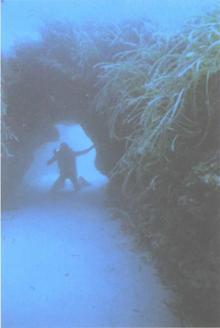 Underworld: The Mysterious Origins of Civilization
Underworld: The Mysterious Origins of Civilization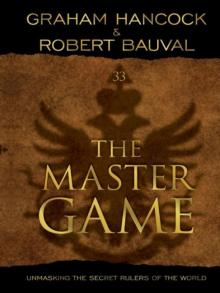 The Master Game: Unmasking the Secret Rulers of the World
The Master Game: Unmasking the Secret Rulers of the World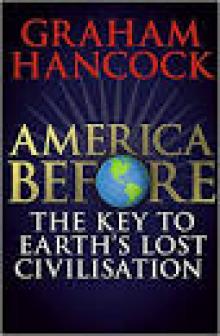 America Before
America Before Entangled
Entangled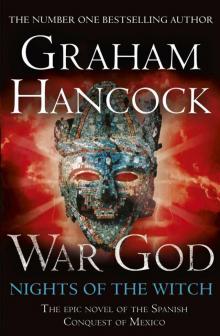 War God: Nights of the Witch
War God: Nights of the Witch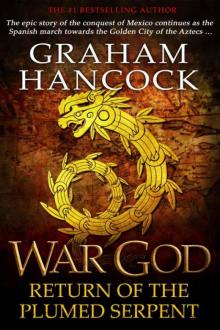 War God: Return of the Plumed Serpent
War God: Return of the Plumed Serpent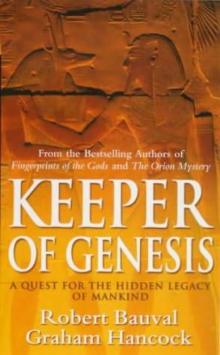 The Message of the Sphinx AKA Keeper of Genesis
The Message of the Sphinx AKA Keeper of Genesis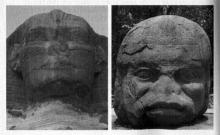 Fingerprints of the Gods
Fingerprints of the Gods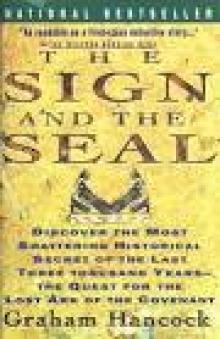 The Sign and the Seal
The Sign and the Seal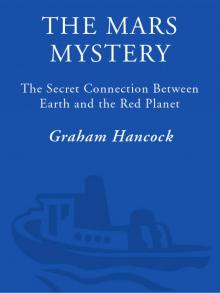 The Mars Mystery: The Secret Connection Between Earth and the Red Planet
The Mars Mystery: The Secret Connection Between Earth and the Red Planet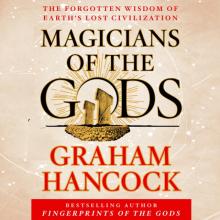 Magicians of the Gods: The Forgotten Wisdom of Earth's Lost Civilization
Magicians of the Gods: The Forgotten Wisdom of Earth's Lost Civilization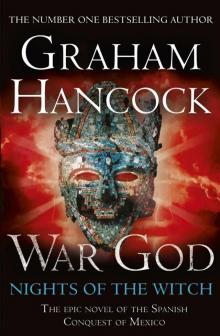 War God
War God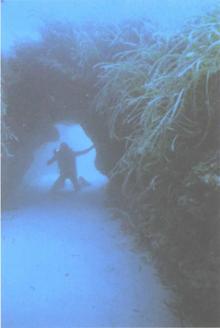 Underworld
Underworld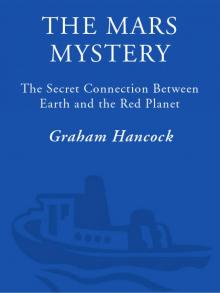 The Mars Mystery
The Mars Mystery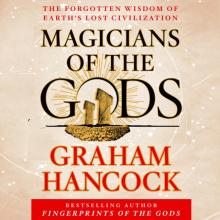 Magicians of the Gods
Magicians of the Gods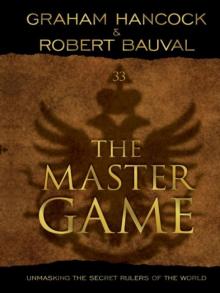 The Master Game
The Master Game